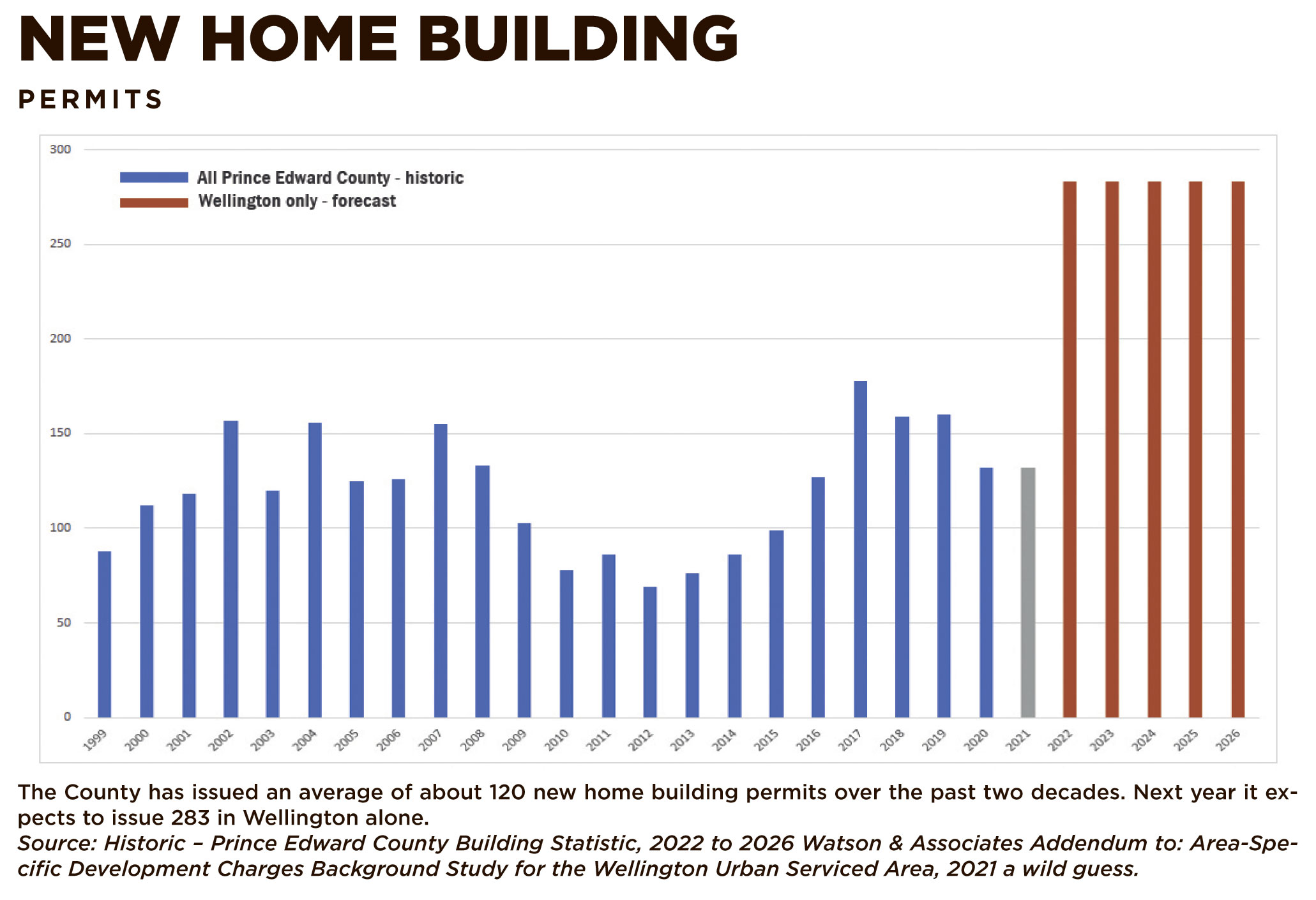County News
Rolling ball

Council takes another step toward the largest capital project in the County’s history
It was neither a small matter nor the last word on the $100 million plan to expand Wellington’s waterworks. So council found itself in a conundrum. Was the Wellington area-specific development charges study addendum before them—at a council committee meeting last week—merely a means to ensure growth pays for growth, or was it one of the last remaining exits on a highway leading to the largest infrastructure project in the history of the County, and a radical remaking of the village?
One councillor compared the choice before them last week to a large ball on a downward slope and picking up speed.
“We are looking at a string of decisions that will lead us into the unknown to a certain extent,” said Councillor Kate McNaughton.
It wasn’t really a choice. The County must have a mechanism to collect fees from developers to pay for expanding infrastructure, roads, fire service and such to serve new homes. But beyond this irrefutable point, there were plenty of questions. Mainly about the assumptions driving development charges (DC).
Twenty-six hundred new homes in Wellington in 20 years. Two hundred and eighty-three new homes next year, and every year after that for the next five years. Nearly a million square feet of new commercial building.
Another councillor found it hard to square 20 years of building experience in the County with the numbers Shire Hall was projecting for Wellington alone—that the village would go from about 35 new homes per year to 283 next year and into the foreseeable future.
“I don’t think we’ve built this many homes in a year—in all of the County,” said Councillor Brad Nieman. He’s right. The most new homebuilding permits ever issued in a single year was 178.
That was in 2018. The average for the past 22 years is 120 new homes. Across the entire County.
Many questions attempted to drill down on the DC charges study assumption that 927,000 square feet of new industrial, commercial and investment building (ICI) would fund a third of the infrastructure investment. More precisely, who would pay if the massive amount of commercial development fails to transpire?
Councillor Ernie Margetson wanted to know if the infrastructure plans could be adjusted if the market doesn’t produce hundreds of new home buyers each year or hundreds of thousands of square footage in new commercial development.
The County’s Director of Development Services, Peter Moyer, explained the municipality could put off some of the proposed infrastructure expenditure. Still, it is on the hook for about $25 million in spending in any event. The municipality cannot really approve any new homebuilding until it is assured of a new water tower, water and sewer trunk lines, an equalization tank at the wastewater plant, as well as environmental assessments for brand new water and wastewater plants.
Moyer added that if ICI development fails to materialize, they may look at converting those lands to more residential development.
The County’s Finance Director, Amanda Carter, was blunt in her assessment.
“Any shortfall would be impacting ratepayers and potentially the tax base,” said Carter. “We would have to make the payments from either of those sources.”
But Carter added that developers have signalled enough upfront commitment currently to fund the next seven to eight years of debt servicing.
Neither professed to have a crystal ball to forecast the future, which prompted Councillor Janice Maynard to remind her colleagues of the sizeable risk they were taking on and the potential downside impact upon existing water and wastewater users.
The chief argument Director Moyer makes for moving forward is that the village’s ageing infrastructure will need to be upgraded and or replaced, with or without growth. The main selling point of the plan currently before council is that new homebuilding will help pay for this renewal and that upfront developer payments will offset the risk.
But it remains true that the decision to push forward on $50 million in new waterworks plants will be on this community and council soon.
As Director Moyer noted, “We will get to a point where we can’t turn back.”


Comments (0)